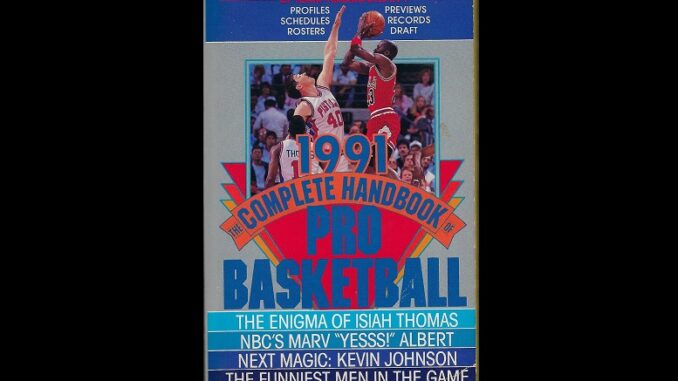
Back in the days before the internet, I cannot tell you how thrilling it was to approach October, the start of the new NBA season, when the new Zander Hollander Complete Handbook of Pro Basketball would come out.
You’d keep checking in the Sports section of the bookstore — which for me was a Barnes and Nobles in Manhattan on 8th Street and Broadway — to see if it had arrived.
And then there it would be — a quick purchase and could not wait to start reading it on the subway home to Brooklyn.
Zander Was On Point & Funny
It was more than a treat — the unique feature was the funny and accurate bios of each player that Hollander provided, which were part scouting report, part standup comedy, but always razor sharp and on the money. Zander pushed the envelope. This type of writing, on sports players, was not available anywhere.
Zander also provided statistics for each player, a scouting report on players just drafted, and predictions — a complete handbook.
Analysis of Zander’s Analysis
I’m providing here a sampling of the 1991 Handbook — the pages for the Knicks team — under Fair Use doctrine of Copyright law, and with perfect hindsight, will analyze Zander’s analysis. The book details the 1989-90 season, with the 1990-91 season about to begin.
The 1990-91 Knicks
The Knicks were coming off a disappointing 45-37 campaign in 1989-90, coached by Stu Jackson who was put into the role after Rick Pitino left for greener blue-grass college pastures in Kentucky. Pitino had led NY to a 52-30 season in 1988-89, wherein they lost in the Eastern Conference semifinals to Michael Jordan‘s Bulls, 4 games to 2. Stu had been Pitino’s assistant coach with the Knicks and with Providence before that.
Stu wasn’t Rick Pitino — and he would be fired 15 games into the 1990-91 season with a 7-8 record, replaced by veteran John MacLeod — who went an equally unimpressive 32-35.
The Knicks were a team in transition although they didn’t know it — Al Bianchi was still the GM — he would step down in a year for the young whirlwind Dave Checketts, whose first order of business was bringing Pat Riley to NY. But that was a year away. The 1990-91 Knicks were heading for another disappointing season in which they’d go 39-43.
On Playmaking — Rod Strickland, age 23, had just been traded after 50 games in his 2nd season for 33-year-old Maurice Cheeks. The trade devastated a lot of Knick fans at the time and would yield life-long scars. At the time it was reported that Strickland was always 10 minutes late for the team bus. Years later, it was discovered this was ‘NBA talk’ for ‘he was always high on marijuana.’
So what had been a Knick dilemma of having two great young point guards in Mark Jackson and Rod Strickland became Cheeks — who supplanted Mark Jackson as starter, as Jackson had gained some weight by his 3rd season and wasn’t playing as well as he had as a rookie.
After a disappointing first 2 seasons by Patrick Ewing, Mark Jackson had come to town and helped him become a dominant big man. By 1989, Ewing was one of the best players in the NBA, and Zander’s analysis shows that.
The Charles Oakley-for-Bill Cartwright trade was one of the best in Knick history, followed by the fantastic Oakley-for-a-young-Marcus Camby trade at the end of Oakley’s career (by GM Ernie Grunfeld).
Kiki Vandewegh was about to have a pretty good season for NY — averaging 16.3 ppg (.362 from 3) in 75 games. It would be his last season as a regular, as by 1991-92 he’d become a reserve under Pat Riley.
Tucker would again come off the bench for NY in 1990-91, and do his usual — 7 ppg and 41 percent from 3. Tucker’s lifetime percentage from 3 was .408 — great even by today’s standards. At the end of the 1990-91 season, Tucker would be packaged with Jerrod Mustaf and two 2nd-round picks to Phoenix for Xavier McDaniel — a Great trade.
Eddie Lee Wilkins had been a great find for NY and was a fan favorite off the bench for 5 years. He’d have his usual 4ppg-off-the-bench season for NY in 1990-91 before going to Italy to play.
Mark Jackson was demoted in this Zander coverage of the Knicks — falling to the 3rd page. People remember him being out of shape; what isn’t remembered is the knee and thigh injuries that he was also dealing with. Mark would average 8.8 ppg as the backup point guard for NY in 1990-91, then be traded in the off season to the LA Clippers for Doc Rivers and Charles Smith. Later, Mark would find a home with Indiana where he had tremendous success, and later at age 35 come back to NY. Mark finished his career as the #2 all time assist leader — he is currently 6th — and should be in the Hall of Fame.
The selection of Kenny Walker with the #6 pick in the 1986 draft was the pick that hurt the Knicks’ Ewing years the most — as NY hoped Walker would be another James Worthy, but he wasn’t. The very next year, in 1987, Chicago picked Scottie Pippen with the #6 pick.
Gerald Wilkins‘ warts were showing by time of this Zander writeup. Wilkins would play two more years in NY — good ones averaging 15.6 ppg both seasons — before being released by NY and Pat Riley in September 1992. Wilkins would be picked up by Cleveland where he averaged 15.4 and 15.2 ppg, before finishing his career with a year in Vancouver (the original location of the Grizzlies!) and 3 years in Orlando.
My sister in law met Brian Quinnett at a bar in Brooklyn (or Manhattan) in 1990. She was a very pretty girl aged 21 at the time and guys no doubt flocked to her. She went on to marry a surgeon with his own business of 12 other surgeons who has probably made a lot more money than Quinnett — not that Quinnett wasn’t a catch too. I’ve been waiting 30 years to write that somewhere.
Zander’s writeup of these Knicks was rather dry by Zander standards — until you get to Stuart Gray (above).
The rookie that Zander doesn’t mention here is John Starks — who signed with Al Bianchi’s Knicks and played for NY in 1990-91, averaging 7.6 ppg in 19 minutes over 61 games. Not Zander’s fault as Starks signed with NY on October 1, 1990 — after this book went to press.
But that is mind blowing — all these years I remember it as Pat Riley finding and signing Starks. Not true Bianchi did.
I remember Al Bianchi as a “suit” — forgetting he had a 10-year NBA career with Syracuse and then Philadelphia. He passed away in 2019 aged 87. I wonder if for years he was telling anyone who would listen that He found Starks, not Riley.

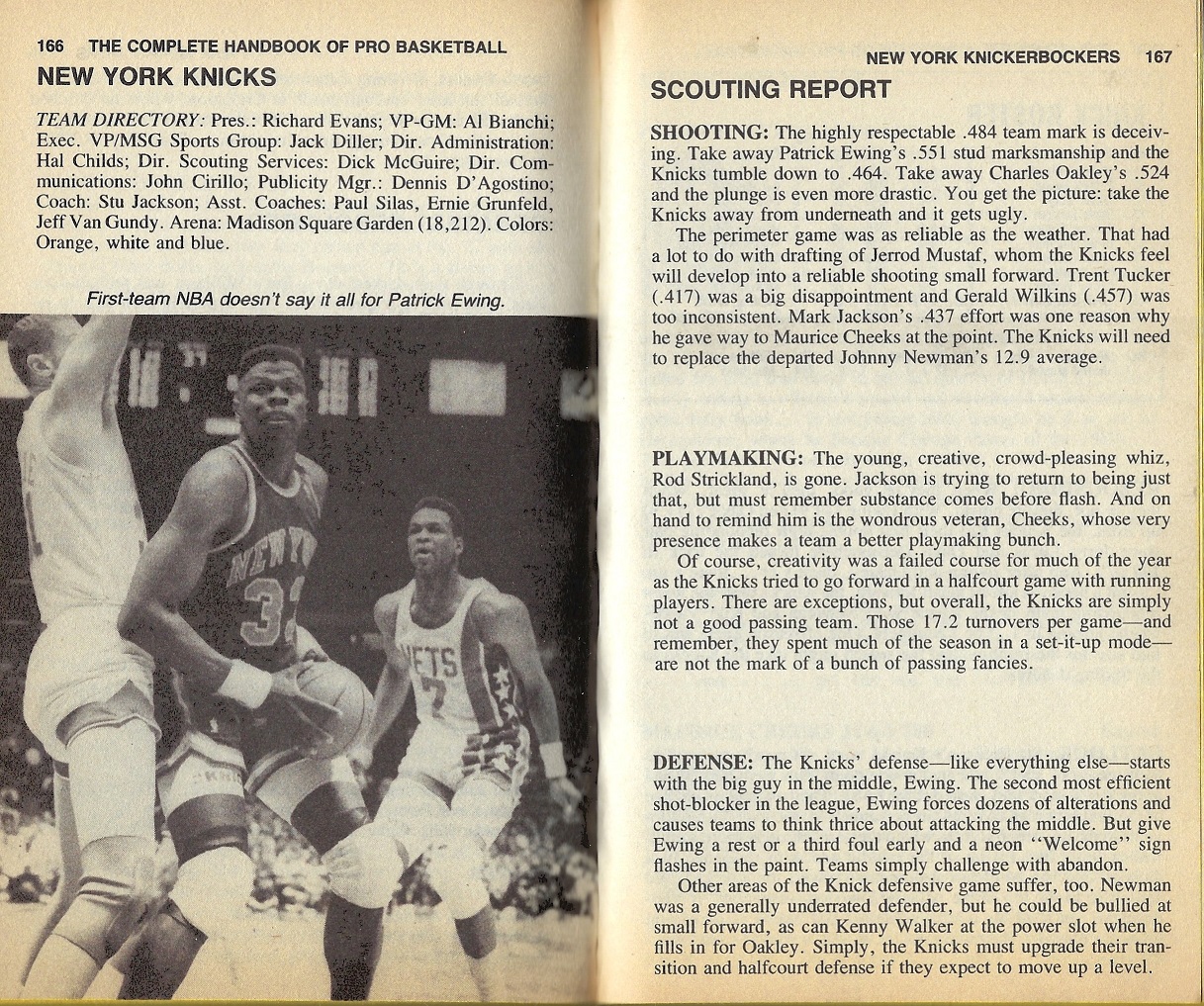
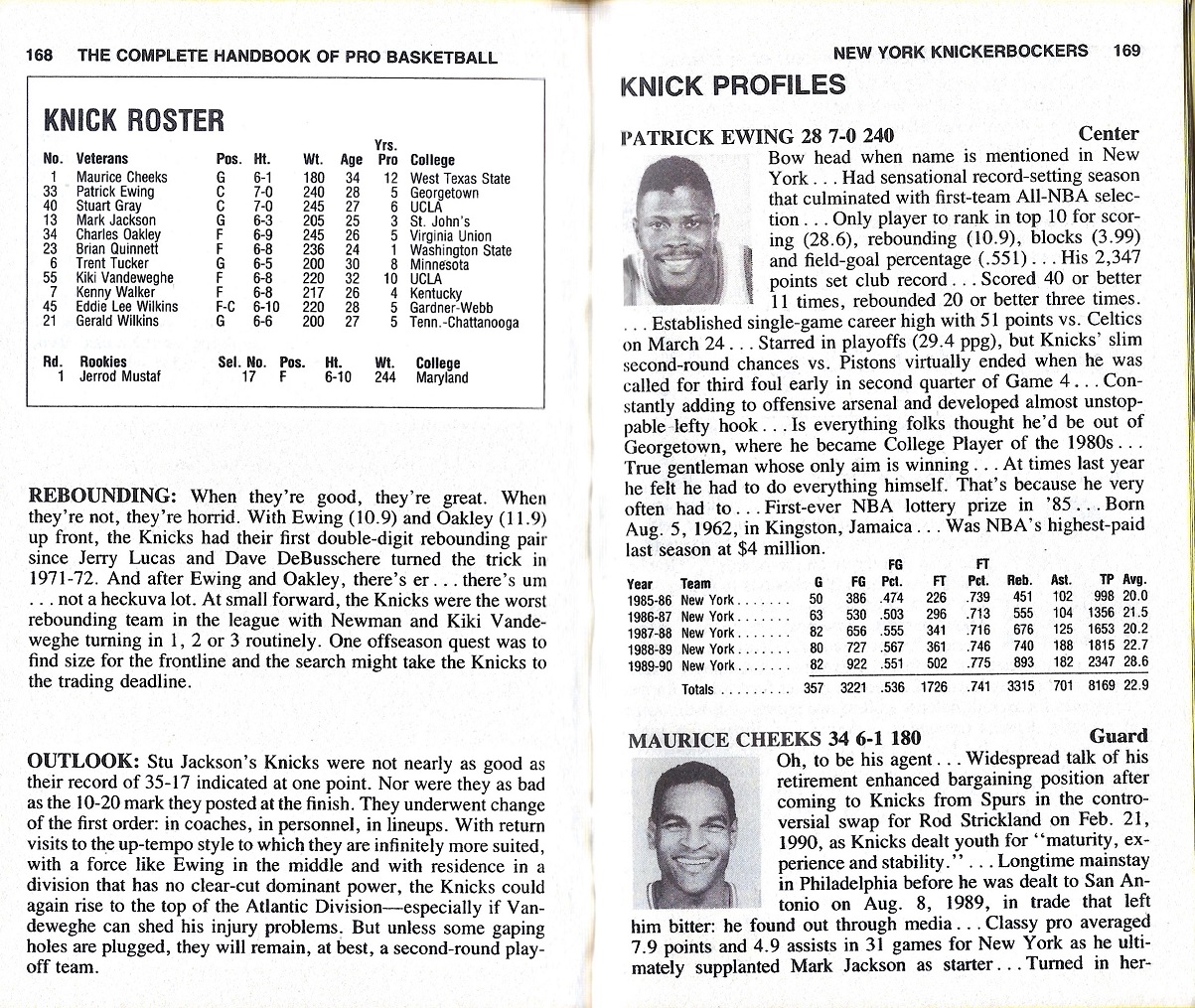
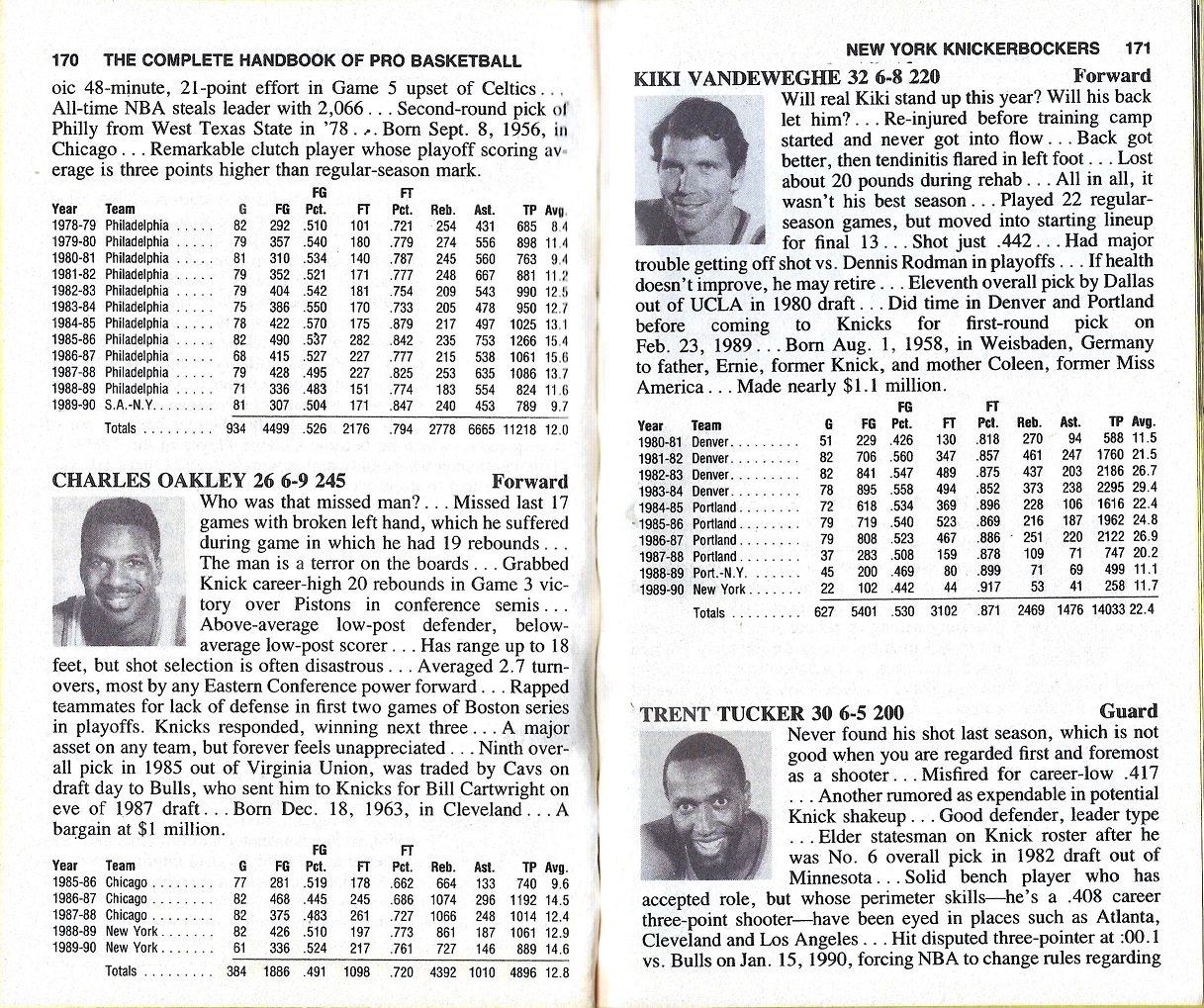
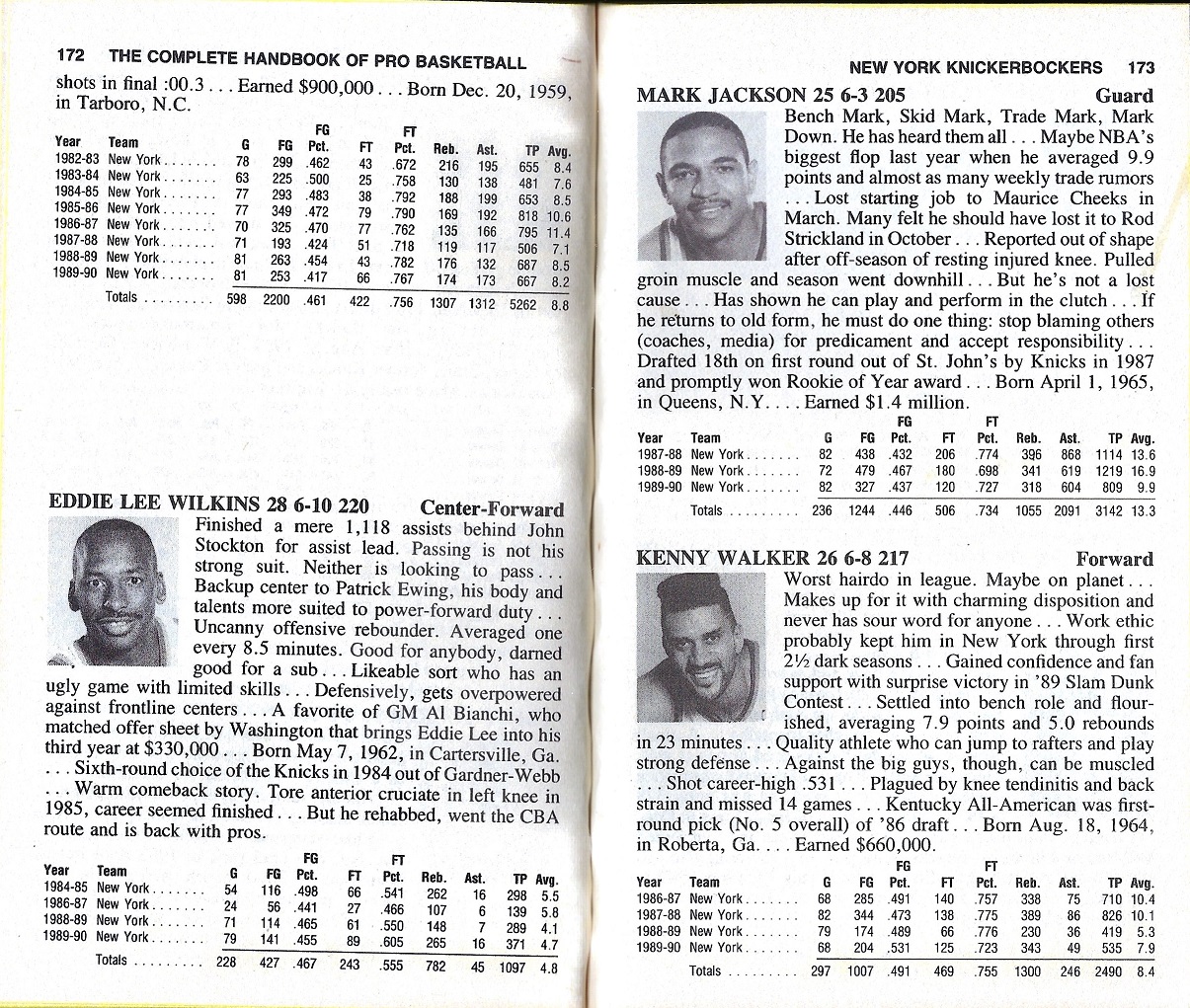
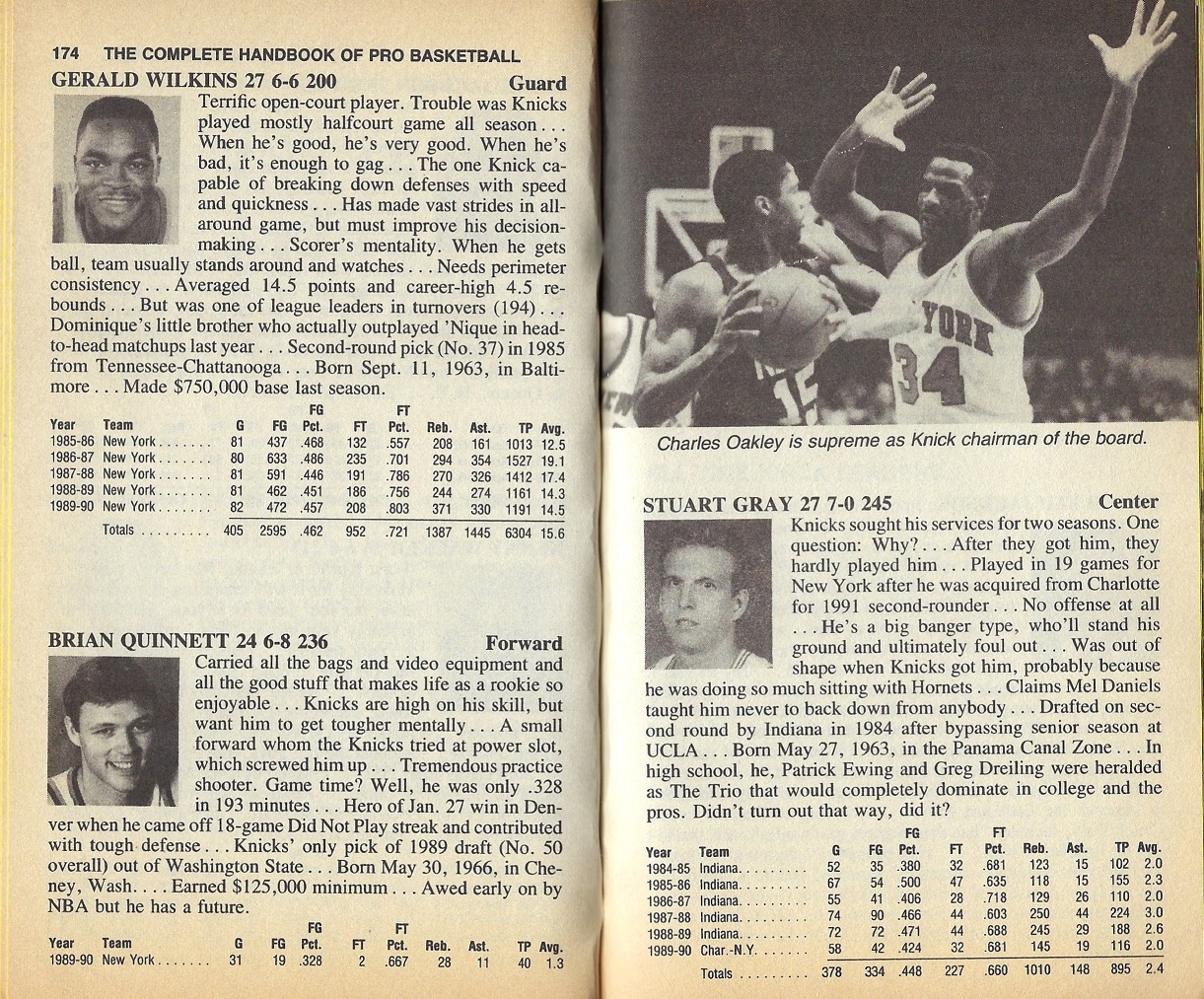
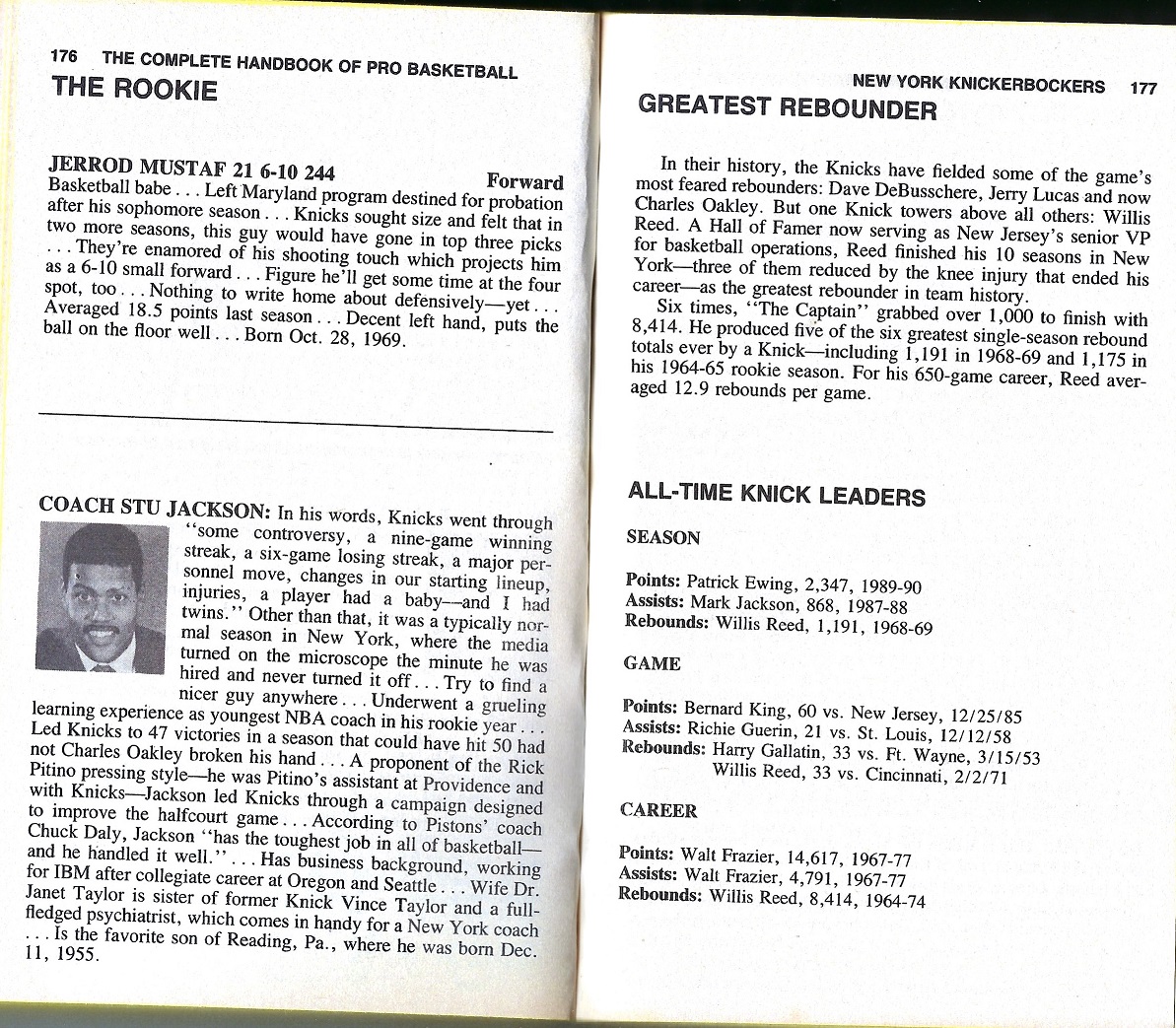
Be the first to comment